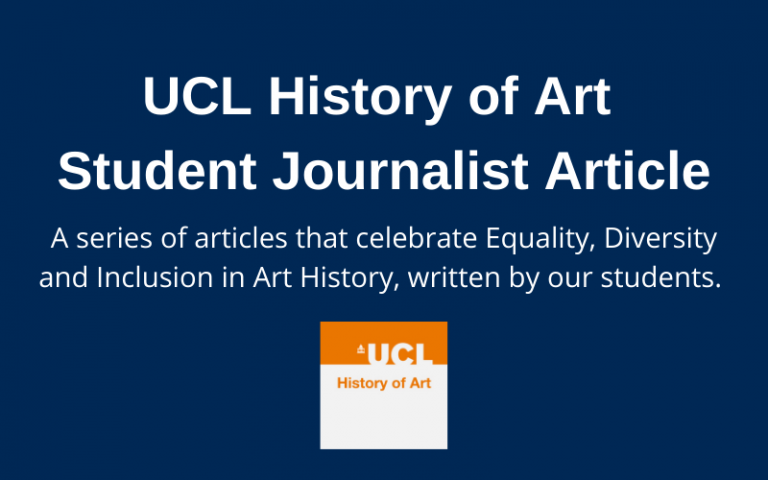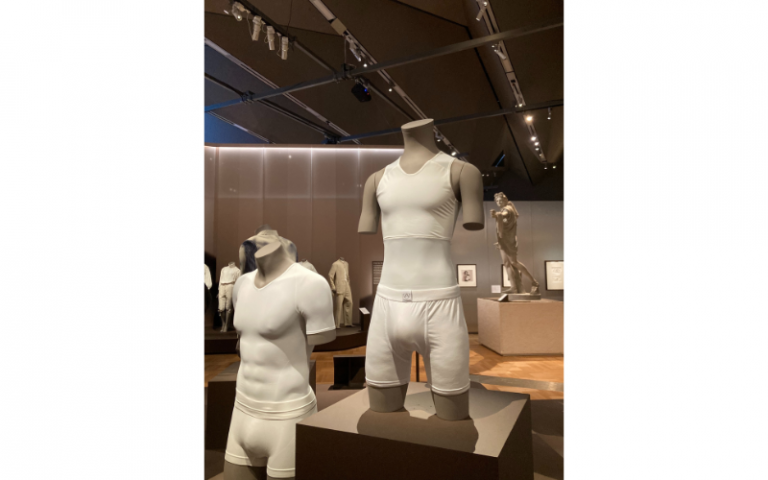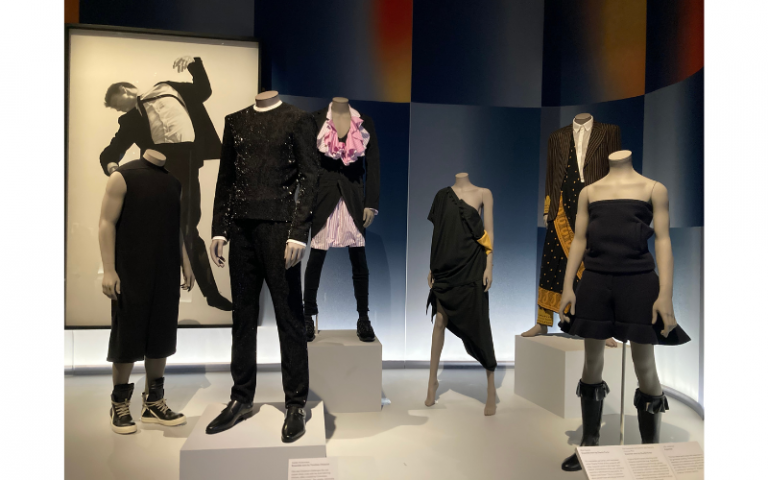Fashioning Masculinities: the Art of Menswear at the V&A - Student Exhibition Review
21 July 2022
As part of our commitment to Equality, Diversity and Inclusion, we have appointed three student journalists to create compelling content which links Art History and EDI. In this article, student Andrea Petit reviews The V&A's 'Fashioning Masculinities: The Art of Menswear'.

Alarming statements (for some) have been proclaimed in recent years declaring that the 21st century has brought on the ‘death of the suit!’ Well, fear not, the V&A’s exhibition Fashioning Masculinities: the Art of Menswear has come to clarify what is really happening to “masculinity” and why pink, froufrou and ribbons are not so absurd components of menswear, rather, should be celebrated - or at least, accepted.
This pivotal show was created and represented by one of the UK’s (and globally) leading cultural institution(s) in all things design, decorative, and applied arts. Founded in 1852 by Queen Victoria, comprising many collections of national status, and set in oh-so-famous London, it is very symbolic that the Victoria and Albert Museum would host this exhibition. The museum almost serves as a visual beacon of British/Western culture, mirroring contemporary values, interests and social customs. On this occasion, the V&A has recognised and announced this century’s changing ‘social and sartorial conventions for masculinity,’ challenging gender norms deeply anchored in Western societies for the past two centuries: such as, men wear black and white, straight-cut suits.

And straight-cut suits were exactly what I was expecting to see, making me quite hesitant to give this show a try - which is why I was so pleasantly surprised when entering the first room. Tackling undergarments and nudity, the masculine was stripped bare to its skin before donning clothes throughout the show. This room immediately debunked myths surrounding what masculine bodies are expected to look like - which standards are still based on Greek antique statues (who often have muscles that do not even exist). Visitors discovered canonical cisgendered muscular types, larger physiques and transmasculine persons in a harmonious and all-inclusive space. It served as the foundation stone to better understand what purpose clothes historically served in accentuating or hiding certain physical traits.
As a queer person, I was touched by the fact that the conversation about gender, different identities and appearances was seamlessly brought in and developed throughout the exhibition. There was no separation or classification of different garments, dresses were set next to suits, transmasculine binders next to a statue of cisgender male icon Apollo - it came as something evident. Rosalind McKever, curator of paintings and drawings, says in an interview: “When is and isn't something menswear? That felt very interesting and something that felt fluid that we didn't want to answer in a set way.”
The exhibition was definitely built on this idea of fluidity, each room tackling a different aspect of the history of menswear such as: the colour spectrum, ‘frippery and folly,’ textiles and patterns. All categories carried the common thread of ‘how complex, how blurred, the boundaries of masculine fashion are.’ Curators McKever and Claire Wilcox (senior curator of fashion) founded this show on the representation of ‘the long history of gender non-conformity through dress as well as celebrating its contemporary visibility.’ To do so, Fashioning Masculinities obviously employed textiles and garments, but also photography, sculpture, video, drawings, advertisements, and oil paintings by a range of different creators. Most items showcased were accompanied by a short yet detailed caption which gave visitors more context and information; this attentionate feature conveyed how carefully this collection had been selected.

In the last room came the suit, the contemporary symbol of masculine fashion we were all waiting for. The show is almost an exploration of the historical culmination that brought menswear to where it is today. Where have all the colours, heels, tights and lace-trimmed collars that the exhibition presents gone? How did all these vestimentary practices, once worn by all (as long as able to afford such luxuries) solely become synonyms of “femininity” and therefore no longer wearable by men? The tight mould of a newly fabricated masculinity male-bodied individuals have been expected to fit into dates back to the 19th century, ripples of the French Revolution. The resulting uniform of the suit is a two-faced object: on the one hand, it was one of the first widely accessible ‘refined’ garments for men which overlapped social class and wealth. On the other hand, the monochrome suit became classified as the only masculine attire which had to be worn on all occasions such as work, marriage, funerals etc. It both empowers its wearers and entraps them.
The rigid template of masculinity started being modified and challenged in the mid-nineteenth century by various subcultures, reappropriating the suit’s inherent symbolic power to protest their ideas. Although the classic black and white suit remains the most common piece of menswear, the exhibition’s final note comments on gender nonconformity becoming increasingly visible in fashion nowadays; especially through social media, magazines and red carpet events such as the annual Met Gala. Three ‘viral’ dresses close the show, worn by different contemporary public figures; opening a conversation on the future of menswear and gender dichotomy for visitors to reflect upon and discuss as they leave the museum.
The critique I may offer to a fascinating exhibition is of its confusing layout and its overarching eurocentricity. Both may be explained by the colossal nature of the theme it attempted to dissect. To potential readers and museum-goers I propose we look upon this show as the beginning of a much broader conversation about gender (in art, culture and society) due to further unravel in global institutions in coming years. Starting with a Western-focused British rendition of the subject, we may hope to see included different cultures and their inevitable variations of masculinity and fashion.
 Close
Close

